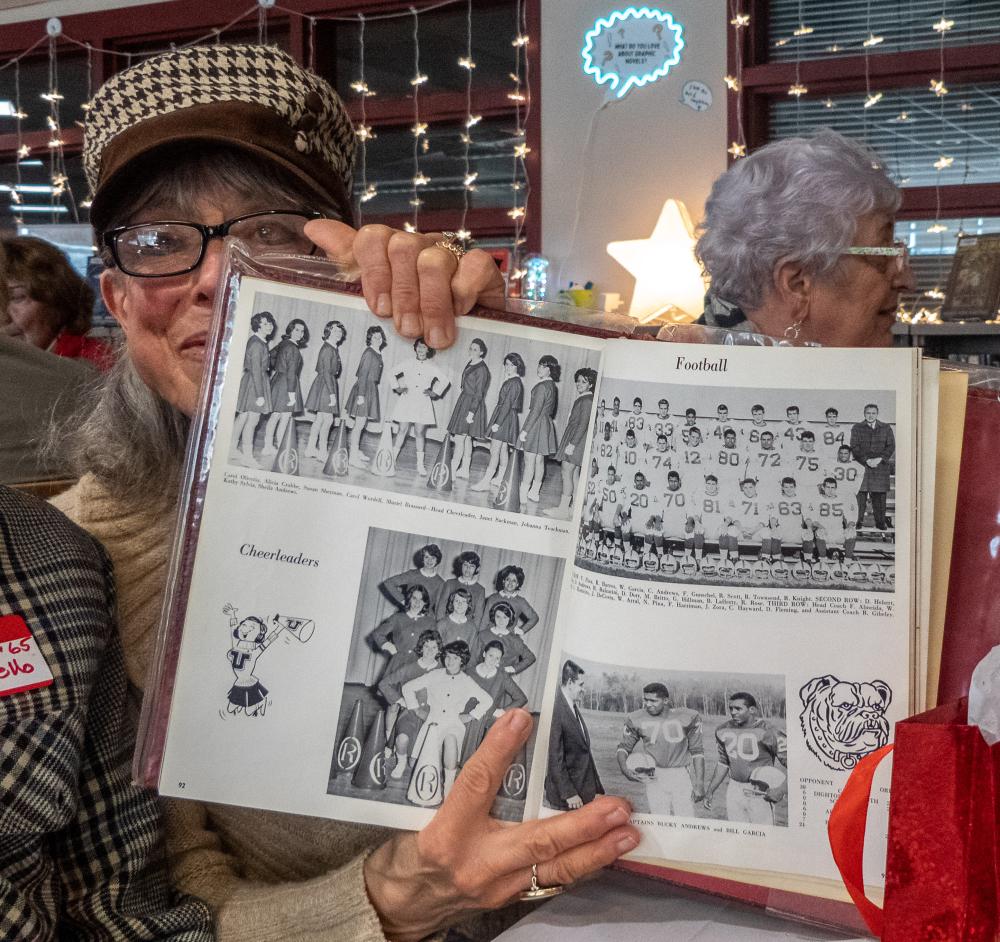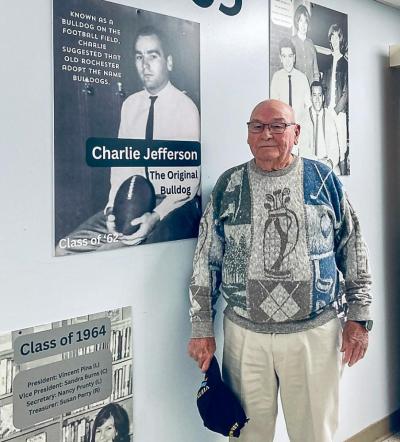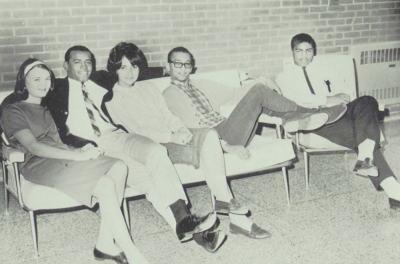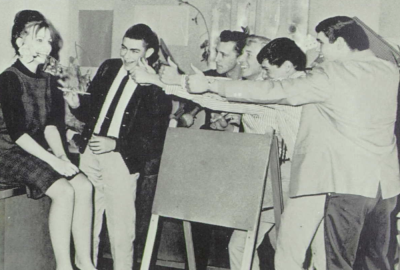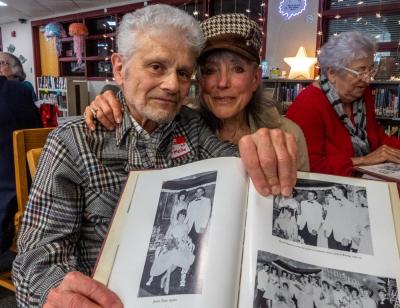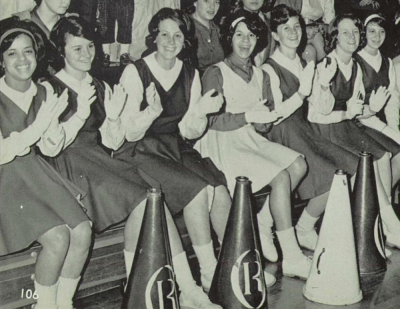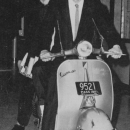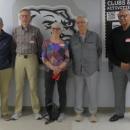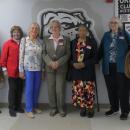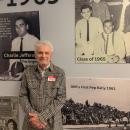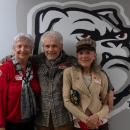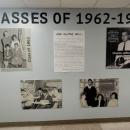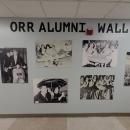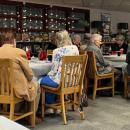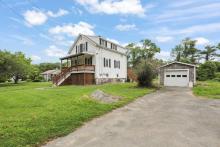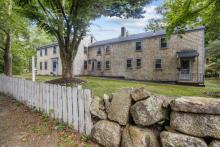Back to school: First alumni reflect on Old Rochester’s early days
MATTAPOISETT — When Old Rochester Regional High School opened its doors in September of 1961, students met for the first time, teachers, many in their early 20s, were at the beginning of their careers, and the school was a blank slate, traditions and cultures not yet born.
“The first day we got here, Mr. Bowman, who was the principal, he made an announcement because the grass hadn’t grown yet,’” said John DeMello, who had been vice president of the Class of ‘65. “He said, ‘OK, please stay off the lawn because it’s going to grow someday.’”
“We all kind of looked and said, ‘Uh-oh, this doesn’t look great,’” John DeMello said.
In that first year, hallways were missing signs, students were finding horseshoes in the football field that was once a farm, some of the classrooms couldn’t be used and students volunteered in the cafeteria.
“It was kind of fun because there wasn’t a lot of mingling in grade school,” John DeMello said. “If you were from Mattapoisett — you’re 14-years-old, how are you going to get to Marion, how are you going to get to Rochester? So it was the first time we met a lot of these people.”
Before entering freshman year at Old Rochester Regional High School, John DeMello said his life growing up consisted of the Center School ball field, town wharf and town beach.
“All of a sudden you’re here with kids from different backgrounds and different experiences,” he said.
Incoming seniors had the opportunity to stay at their current high schools, but with a fee of $700 to do so, students like Charles Jefferson, class of ‘62, chose to transfer to Old Rochester.
Jefferson said he was “a little bummed out” at first because he was supposed to return to his old school in Wareham as one of the veteran football players, but he instead became the only experienced player at Old Rochester, with most of his teammates having never played before.
“I had to teach and show these guys how to play and do it,” he said.
If it weren’t for Jefferson, Old Rochester wouldn’t be known as the bulldogs.
Jefferson said that in the second football game of the year, the Old Rochester team was the underdog, and while he didn’t mind losing, he wasn’t “losing by 44 points.”
“I played harder to fight them off,” he said, noting how in each play, his arm was becoming increasingly injured. “It was like a lightning strike — it hurt so bad.”
As the game went on, Jefferson would lay his head on the ground so no one could see him crying from the pain, but when a ref would come over he would pop back up because he knew the referee would “call the coach to get your guy.”
“The way I was scrapping, there were two or three parents near the coach sitting in the stands and they kept yelling, ‘The kid scrapped like a dog. He fights like a bulldog!’” he recalled.
In an article published after the first game, Old Rochester was referred to as the “red wave” or the “red and white,” but after the second, they referred to the team as the “bulldogs,” Jefferson said.
“So I knew it was stuck,” he said.
John DeMello and Kathy DeMello, who have been married for 58 years, met sophomore year after Kathy had gone to an all girls school for the past eight years.
“This was really different for me,” Kathy DeMello said.
According to John DeMello, rules for girls were “pretty strict.”
“They used to have to come to school with skirts. They got on their knees and the skirt had to touch the floor, otherwise they had to go home,” he said.
According to Kathy DeMello, the baseball players had to play games in jeans and sweatshirts because they didn’t have uniforms.
“We got razzed big time,” said John DeMello, who played on the team.
He explained that opponents used to say, “‘Here come the farmers from Old Rochester’” and added that the team won two of their four games.
“For a brand new school, it was pretty cool,” he said.
John DeMello said that during the first year the students felt a responsibility that went unspoken: “Do well in sports. Do well in school. Don’t get anybody thrown out of school.”
Sixty years later, the high school bears little physical resemblance to when it opened — the current library used to be the cafeteria, the junior high school hadn’t been built, the ceilings were higher and the main office was in a different location.
“Where the three wings intersected, that was kind of the unofficial meeting place,” John DeMello said. “If you stood there long enough, whoever you wanted to talk to would pass by.”
On Wednesday, May 1, the high school unveiled an alumni wall to honor the first four graduating classes.
“[The alumni] were thinking, ‘We don’t think people really remember us,” said English teacher and National Honor Society club advisor Kathleen Brunelle. “We thought, ‘Wouldn’t it be a good project to make sure people do remember them?’”
For two years, Brunelle and seniors in the National Honor Society designed the wall, choosing pictures that represented what student life looked like in the 60s and what current students would find relatable.
“It's important to know the history of the place where you attend school,” Brunelle said. “I think it helps to bring people together and to feel more connected … [and] I think it fosters a sense of cohesiveness.”



